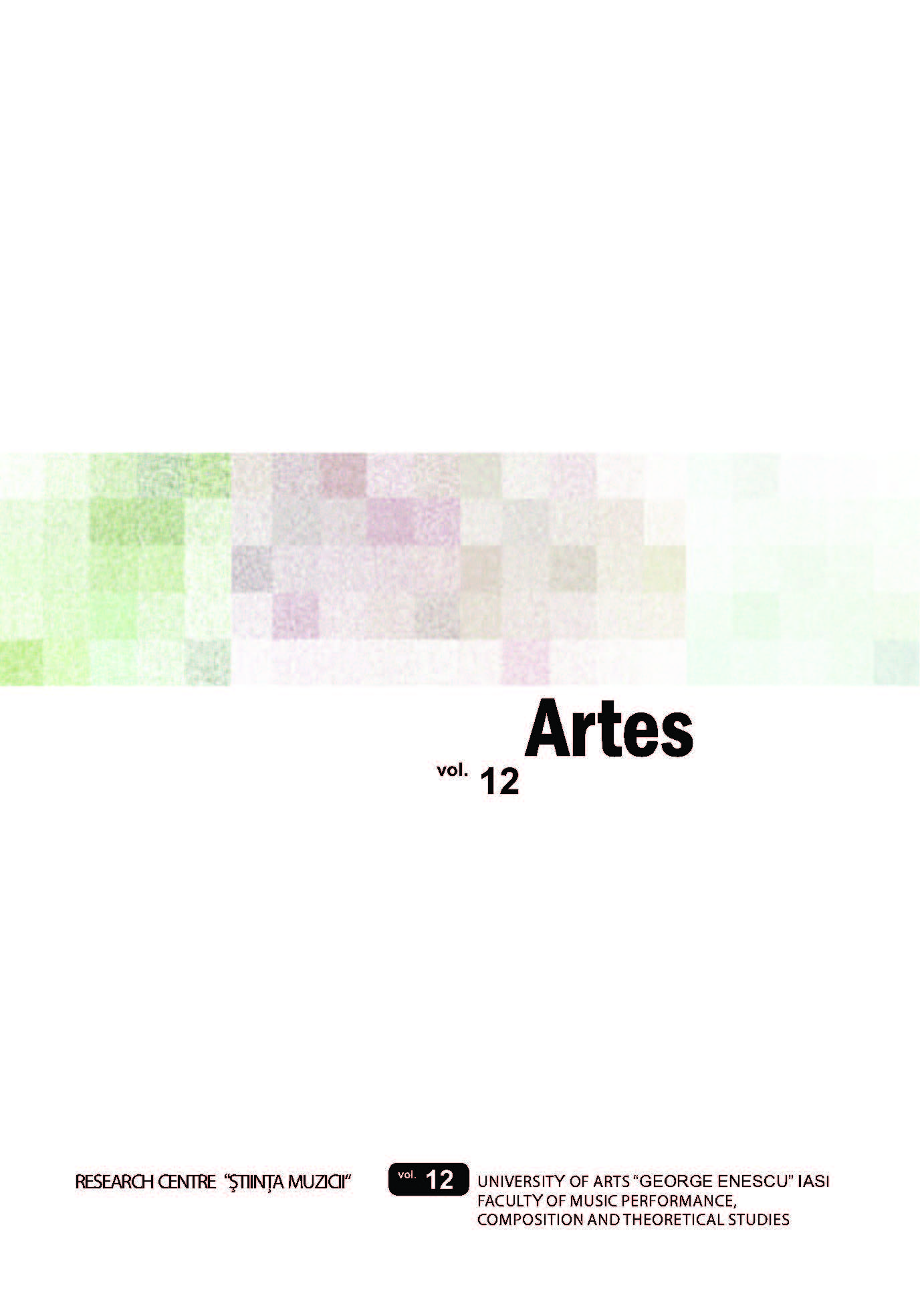Interpretative and theoretical landmark in the Modal Liturgy by Achim Stoia
Interpretative and theoretical landmark in the Modal Liturgy by Achim Stoia
Author(s): Daniela DoroşincăSubject(s): Music
Published by: Editura ARTES
Keywords: Achim Stoia; Liturgy; religious choral music; modal music; polyphonic music; Romanian composers; Modal Liturgy; byzantine music.
Summary/Abstract: xIn march 1937, Achim Stoia is writing a Liturgy for mixed choir, monumental by it’s construction and it’s complex vocal appliance, with a diatonic tono-modal harmony with major-minor intonations and a harmonic - polyphonic writing that presents the imitations and stretto entrances, the pedals and the accompaniment taken from the byzantine music, and also a metric that combines the binary structures with the third ones. The popular modal universe that crates the expressive Liturgy, combined with an expressive and complex harmonic feeling that gives its uniqueness and the own value only to those creations meant to persist all over the ages. A particularity of the composer Achim Stoia that help him create monumental sound compositions is that the Liturgy treats the vocal lines similar to the instrumental ones, and the melodic speech result from the harmonic blend and not from the horizontal development on the melody, as it happens in the liturgical compositions of other authors of religious choral music, and the endings are always composed expansive on major arrangements. The musical language complexity comes around the interpretative creation act requires various execution techniques, starting from the legato sung manner in the seraphic canticles (The Cherubic Hymn), reaching subtle sonorities by poco staccato or cvasi-recitative (Holly God) and ending with a detachee suppleness split from the baroque music scene in complex canticles ( We may receive the King of all, Holy, holy, holy, Lord Sabaoth). The Modal Liturgy of Achim Stoia is in the Romanian musical consciousness a perfection model regarding the harmonic and modal language richness but also as mode of sound construction based on polyphonic principle take from the great Dutch polyphonists technique.
Journal: Artes. Journal of musicology
- Issue Year: 2012
- Issue No: 12
- Page Range: 147-163
- Page Count: 17
- Language: English

